In June 2016, DC Comics kicked off the start of its Rebirth initiative. After a wave of criticism surrounding the way they have treated their characters’ rich histories since 2011’s New 52 relaunch, DC has decided to rebrand. They hope that by restoring their characters’ pasts, they will restore readers’ faith in them as well. Do they succeed? That’s what the Comics Beat managing editor Alex Lu, entertainment editor Kyle Pinion and contributor Louie Hlad are here to discuss. Book by book. Panel by panel.
THIS WEEK: Alex waxes poetic about Mister Miracle (because we’re basically legally obligated to) and New Super-Man, one of the other best books in the DC Rebirth lineup right now.
Note: the reviews below contain **spoilers**. If you want a quick, spoiler-free buy/pass recommendation on the comics in question, check out the bottom of the article for our final verdict.
 New Super-Man #17
New Super-Man #17
Writer: Gene Luen Yang
Penciller: Joe Lalich
Inker: Richard Friend
Colorist: Hi-Fi
Letterer: Dave Sharpe
Back when New Super-Man first started last year, both Kyle and I were in love with this earnest attempt to expand representation in the DC Universe. However, it quickly became apparent that while there were great ideas being toyed with in New Super-Man, the creative team was having some trouble expressing them in a consistent way. Eisner-winning writer Gene Luen Yang had primarily written to the book market audience in his previous work and it showed. Those early issues felt like a writer and artist exploring, trying to find a rhythm so that the fun could really begin. Ultimately, although the artistic team on New Super-Man has never found a consistent roster of talent, the book did find its groove. And honestly, New Super-Man‘s rough start makes its stellar success now all the more surprising and enjoyable.
One of my quieter gripes with New Super-Man when it first started was that it wasn’t the kind of representation that I, as an Asian-American reader, wanted out of a story about an Asian-American Superman. Rather than making Kenan Kong Chinese-American like I am, he was purely Chinese. And obviously this gripe was a selfish one, but I wanted to read a story akin to the one Yang told in American Born Chinese— one about a first generation minority teenager/young adult struggling to find acceptance in a society that considered him as “other.” Basically, I wanted to read my story.
But as time has gone on and the world of New Super-Man has expanded, the creative team of this story has found an ingenious way to tell a very different, yet similar kind of story about diversity. While indeed, much of New Super-Man takes place in China and deals with elements of philosophy and myth that are very specific to that country, it is simultaneously a global story that deals with the way that Chinese people and more tacitly, Asian people in general, are perceived by the west. Nary an issue goes by without an editorial note indicating that the words rendered in blue by the series letterer are spoken in English while the rest are in Mandarin. That note is important because it denotes that we, the reader, will have the opportunity to see Kenan deal with issues of race which are relevant to an American audience despite his home being a relatively racially homogeneous country. So in effect, New Super-Man gives us the best of both worlds, educating us about a distant and often oppositional culture to ours while simultaneously grappling with the way that Asian immigrants and their descendants are treated within our system. That’s more than I could have even imagined we’d ever get from a monthly superhero book.
But beyond that, New Super-Man is fascinating simply because it’s telling such a compelling story. Kenan is one of the most interesting leads in the DC Universe right now because he’s very lovable, yet his instincts almost always go against the morals we’re told superheroes should have. Watching Kenan grow from an overtly seflish person to someone who wants to help others but grapples with his selfish and impulsive instincts has been very fulfilling. It’s a great personality for a lead to have because it makes him flawed in a way that allows him to be the hero yet simultaneously create many of his own demons. That’s the perfect recipe for drama and it’s lead to plenty of it throughout this series. In particular, in this issue, I found myself cheering as Kenan finally unlocked the full powers of Superman by grabbing hold of an ancient talisman. Simultaneously, however, I found myself groaning because of the way that he came to be aware of the relic and the questionable methods he used to retrieve it.
It’s easy to look at New Super-Man and see it as a cheap way to create Asian analogs for DC heroes and villains like Wonder Woman, Batman, and even Bane. However, that would be missing the point. In New Super-Man, the creative team is not just playing with tropes, but actively subverting them as well. One need only look at the way that Yang uses some of the oldest DC characters, Slam Bradley and Ching Lung, to examine Yellow Peril in American history and the American present, to see that there’s much more to this book than meets the eye.
If you’re not reading New Super-Man, you should be. It’s one of the most important books on the shelf right now.
Verdict: Buy
 Mister Miracle #2
Mister Miracle #2
Writer: Tom King
Artist: Mitch Gerads
Letterer: Clayton Cowles
There’s a point at the start of Scott Free’s trial in Mister Miracle #4 where Orion, the new Highfather, lays out the thesis statement for this series. He tells us, as much as he tells Scott, how he views identity. “I am interested here in your beliefs,” he says. “I am not interested in your doubts. There will be no ‘I don’t know’ or ‘it depends…’ for those things are not you. You are what you believe to be true. Or false.” Behind every idea what speak or write, there is a fundamental pillar of truth that we hold to be true that informs that idea. I know the Earth is a sphere because I believe in the empirical data gathered by generations of scientists. I know I am alive because I can feel every tendril of air prod my tongue as it slides between my lips and into my lungs.
The lines between true and false are hard. They’re the pillars that inform the tower that is us. What fills the blank gutter between are the “contingents.” The “what ifs” and “buts.” But what if, Tom King and Mitch Gerads ask, the pillars of truth and falsehood aren’t as stable as Orion argues they are? What if the very idea of true and false are just parts of the nebulous “maybes” that govern our identities and the world at large? If nothing can be affirmed as definitively true and nothing is can ever be ruled out as definitively false, how do we interpret the constant flow of information our senses intake every day? How do we define who we are if we can never feel like we really know…anything?
For the past several issues of Mister Miracle, Scott’s been sitting on a precipice, not knowing what’s real. Not knowing which of his experiences are his own and which have been planted by the malevolent Anti-Life equation that Darkseid controls. It’s caused him to self harm and to hallucinate. To distrust his partner, Big Barda, and to be unable to act after Forager is killed by Lightray, two people who were supposed to be allies. In this issue, the extent of Scott’s doubts come to bear as Orion breaks his “brother’s” worldview down, piece by piece.
From a certain perspective, it’s easy to call Mister Miracle a superhero comic where no one ever takes any action. To some extent, that’s true. But that’s the point. So much of Mister Miracle is about repetition. “Darkseid is.” dominating panel after panel. Panel after panel being dedicated to Mister Miracle simply saying “true” or “false.” That repetition is used to create a sense of monotony. To really put us inside Scott’s head and show us how he sees the world. In his mind, every second is an eternity. The very act of speaking. Of sitting. of standing. Of being. That’s all action to him. Scott is too depressed. Too lethargic and too empty to do any more. And despite how repetitive Mister Miracle is. Despite how slow it is. It remains hypnotic and captivating.
The trial of Mister Miracle is the most stunning sequence in this series to date and it all takes place in Scott’s and Barda’s living room. Gerads imbues the extended sequence with his signature grit, giving visual weight to the scene. But he also undercuts it with a variety of visual gags. The size differential between Barda and the other gods crammed next to her on either side of the couch. The veggie platter that echoes the design of a boom tube. Barda’s exasperated face as she watches a farcical trial of her partner and the incessant ringing of a delivery man who comes to drop a package at a particular tense moment of the scene. There’s no understating how much Gerads has exceeded himself throughout Mister Miracle, packing an endless amount of depth into what mostly amounts to a long series of panels where little changes besides the facial expressions of the characters contained within them. The repetition of these images emphasizes the subtle differences between panels. We see Orion’s eyes grow narrower and narrower in anger and disdain. We see Scott’s look get cloudier and cloudier. Orion grows bigger and steps closer to Scott as the former’s dominance over the latter grows. It’s a repetition reinforced by King’s lyrical dialog, where every “true” and every “false” feels like the chorus of a song.
And it all culminates in a solitary page. With Scott. Alone. He doubts his name. He doubts his identity. He doubts his doubts. All he knows is hate. A page of nine panels all focused inward on Scott’s face as his look grows grimmer and darker. As doubt turns into despair and then again into rage. Scott doesn’t know what he believes in or who he is but he does know who he hates. And he lashes out against them. Violently.
A perfect mirror of ourselves.
Verdict: Buy
Round-Up
- Wildstorm: Michael Cray #2 sees our titular metahuman lead taking on an alternate reality version of Oliver Queen who comes straight out of “Most Dangerous Game.” While I think this book is still quite fun overall– Hill has a great ear for bantering dialogue and Harris is more than a capable artist– the problems I had with the first issue generally remain here. I still don’t have a great sense of why Cray is doing what he’s doing beyond pure survival– maybe that’s all it is. Maybe that’s fine. I personally would like a little more, though. Also, I’m not totally sure that I love the ultra-compressed pacing that this book is starting to employ. You’ll see what I mean if you pick it up, which, despite my misgivings, I think is still worth doing for now.
- Dark Nights: Batman Lost is definitively my favorite of the Metal tie-ins so far. It’s certainly not perfect, but it’s way way better than the stories about the Dark Knights, featuring Bruce Wayne being pulled through different timelines and realities as he struggles to escape the hold that the Dark Multiverse has on him. I’m a sucker for alternate reality Batman stories and stories where Batman has gone kind of nuts (see Batman R.I.P.), so this book is way up my alley. It’s pure fun.
Miss any of our earlier reviews? Check out our full archive!


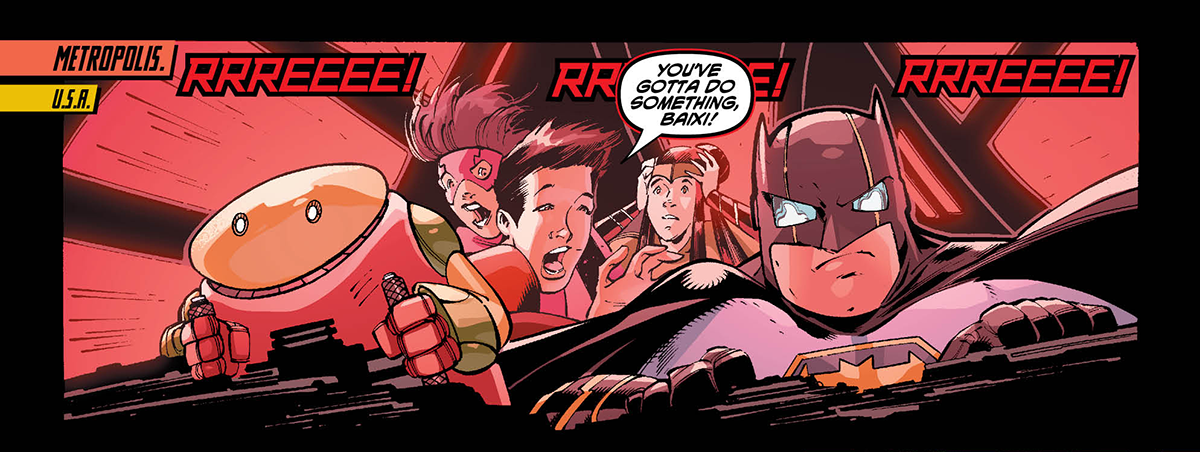
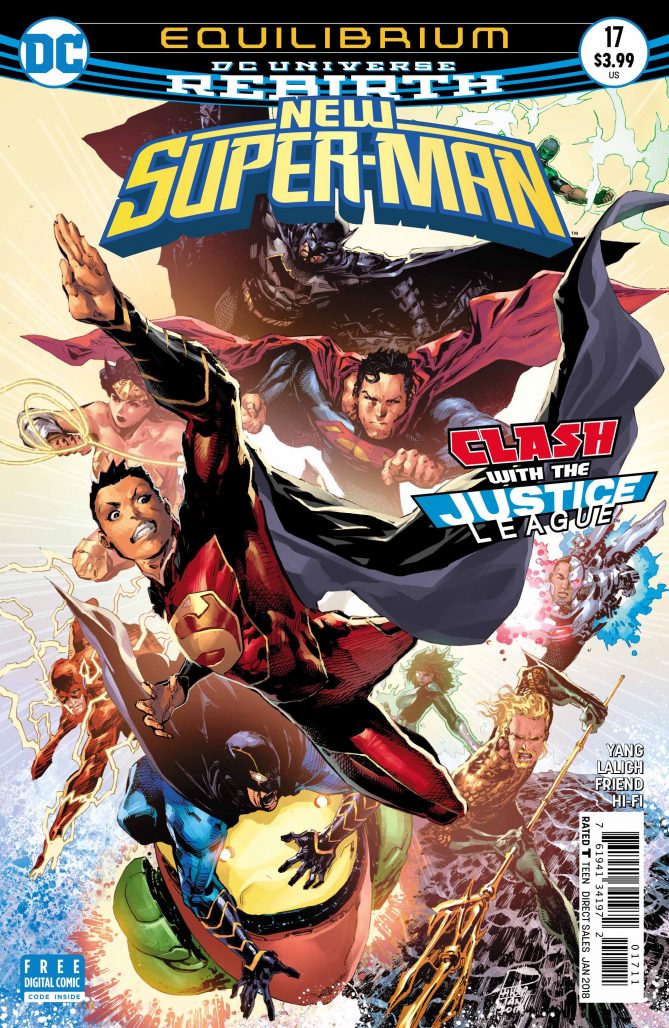
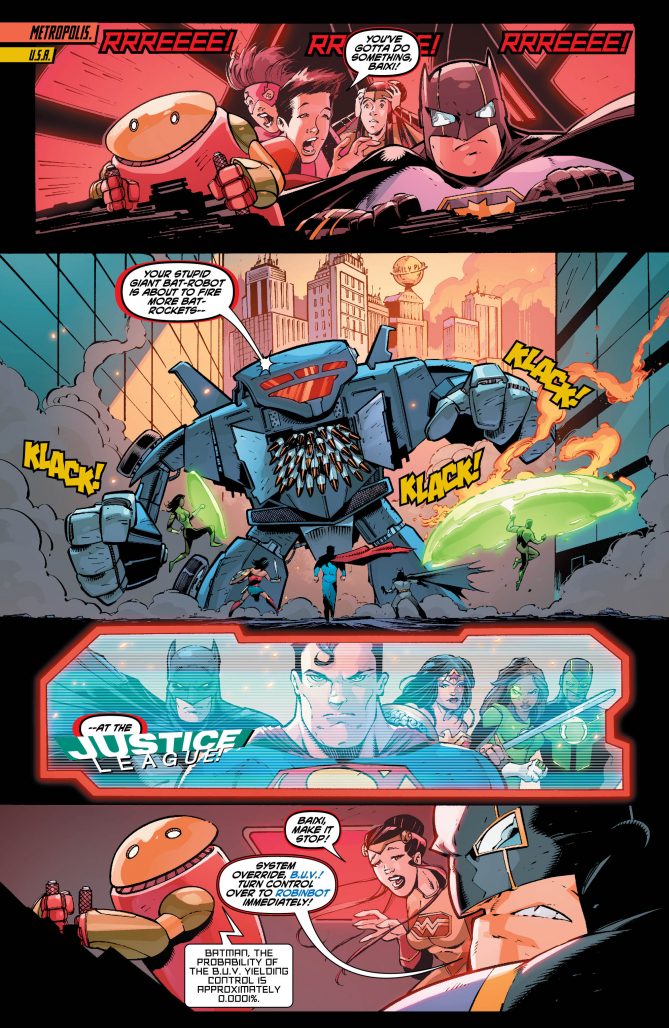
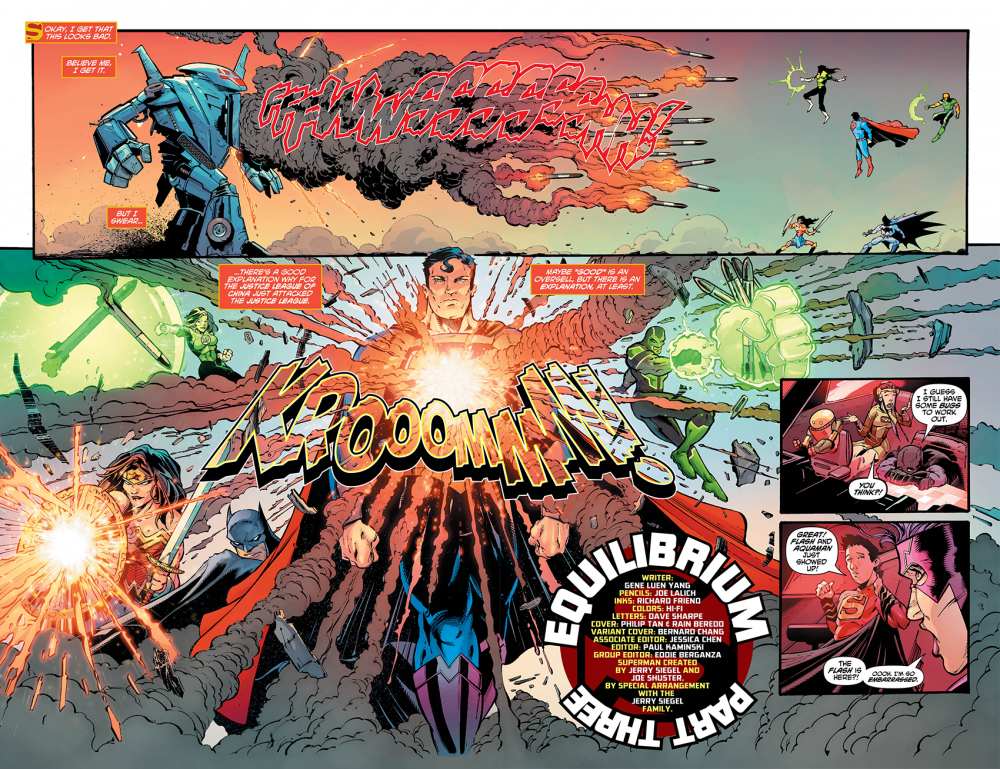
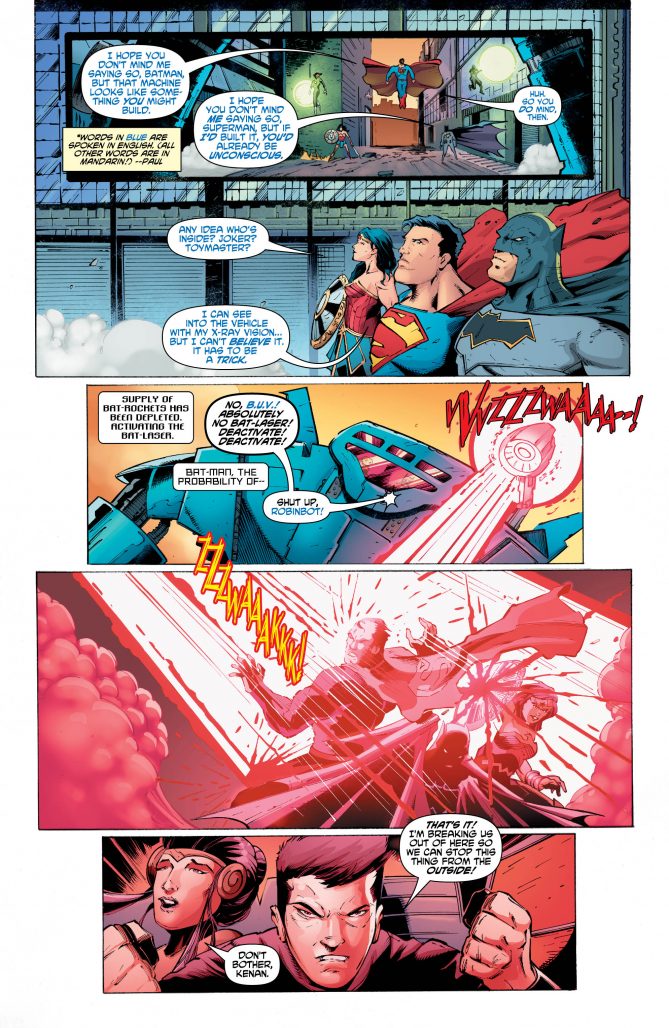
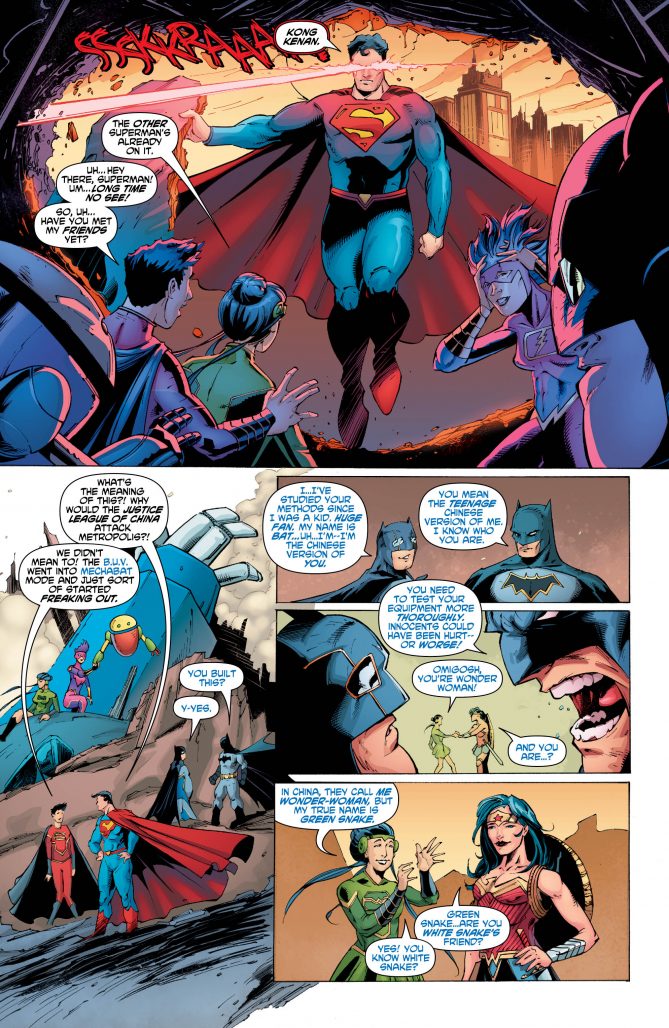
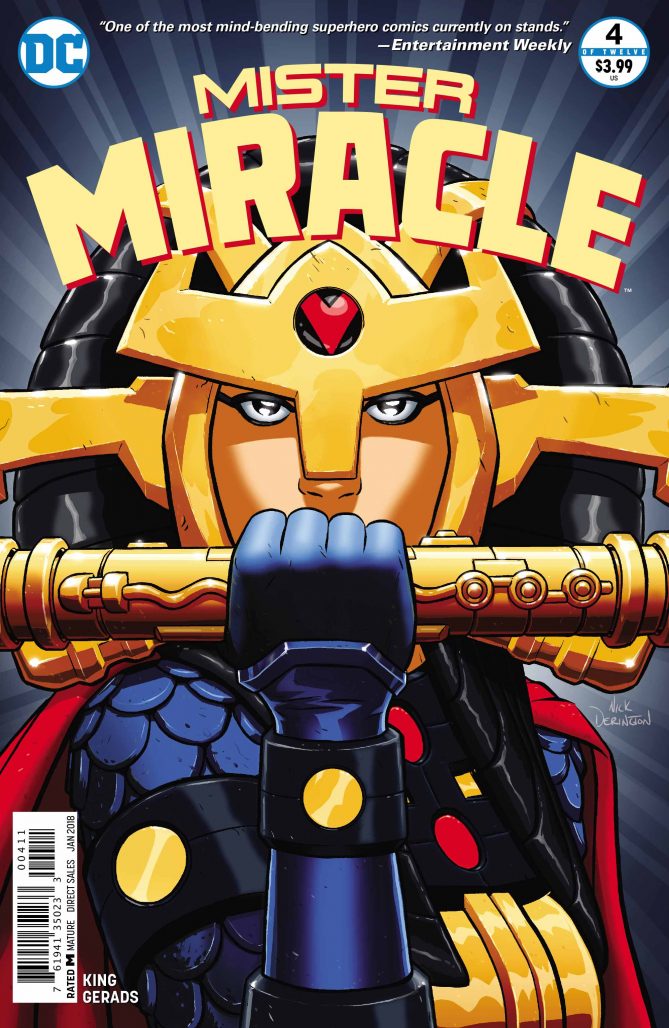
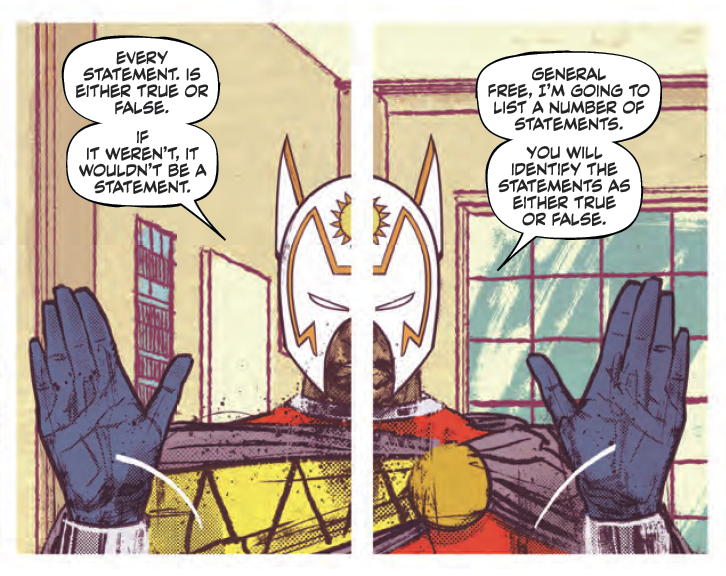
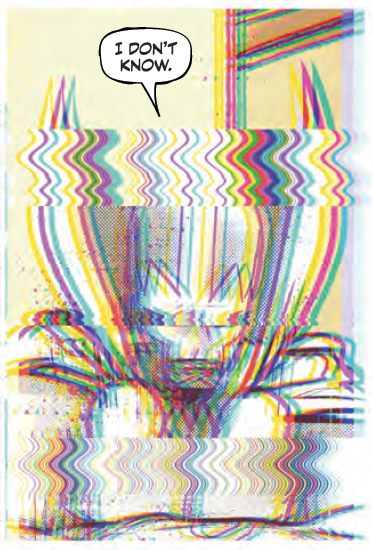
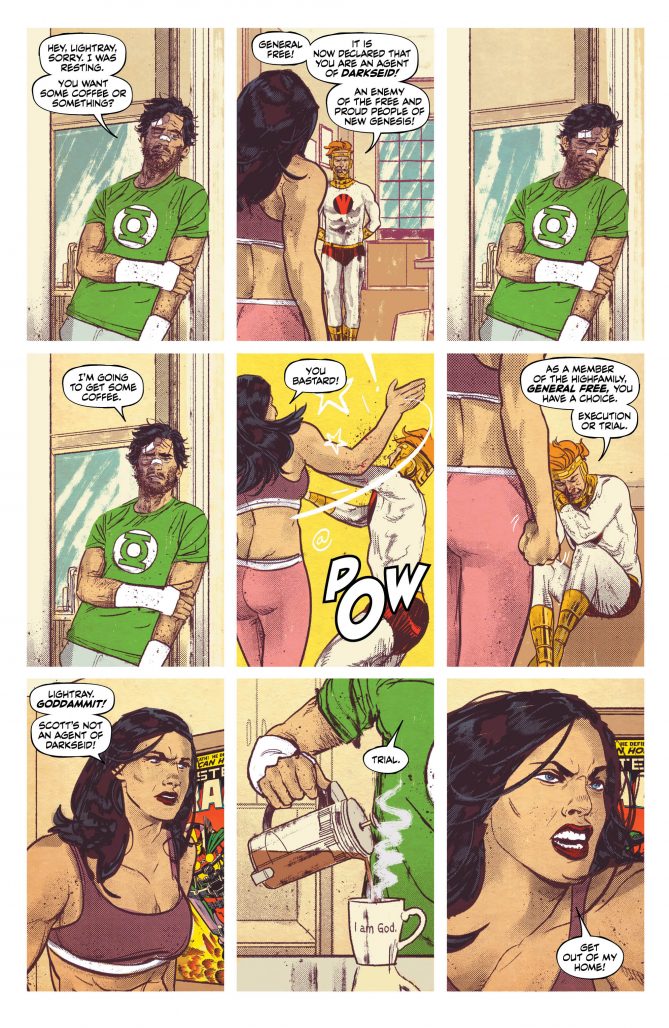
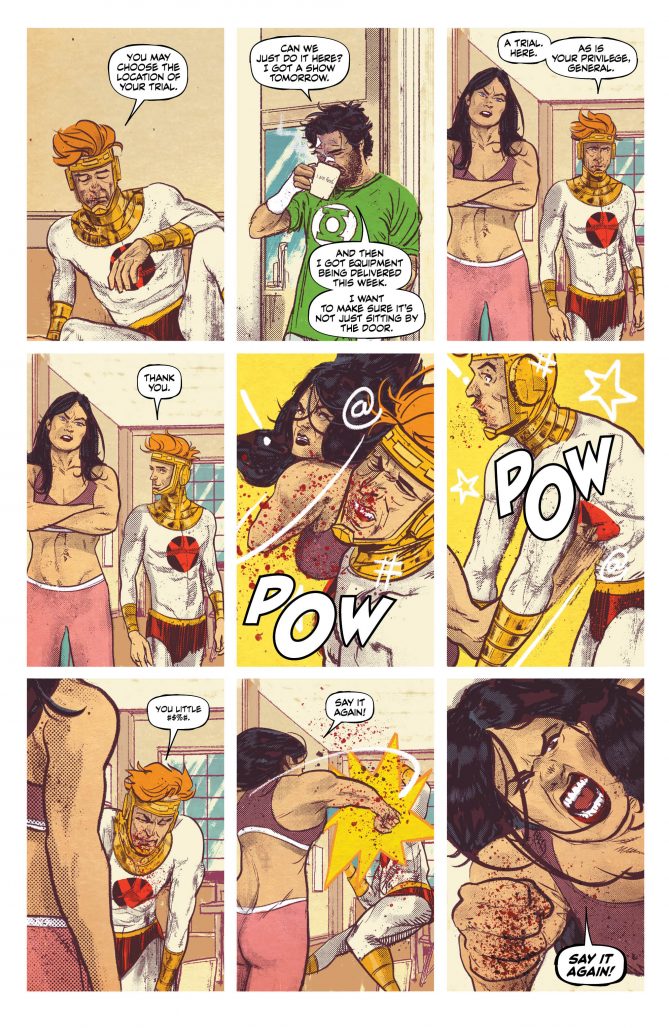





Really moved by your review of new Super-Man. Having comics that appeal to us because they reflect who we are at our core is so important. Glad that a lot of the stuff coming out now really tries to understand that ethos and turn it into stories that are exciting, fun, and though-provoking.
I am really grateful to the holder of this site who
has shared this enormous piece of writing at at this time.
One might even consider cholesterol to become the key source ffor arterial plaque thus keepingg cholesterol consumption under 200 milligramks or
thirty percent each day in case a extremeely important portion of our plan. A polluted, malnourished stomach and intestinal tract is the best environment ffor parasites and worms.
Meanwhile your body hhad not been sensitized
towards the bacterial and viruses that started the soreness
process.
Comments are closed.